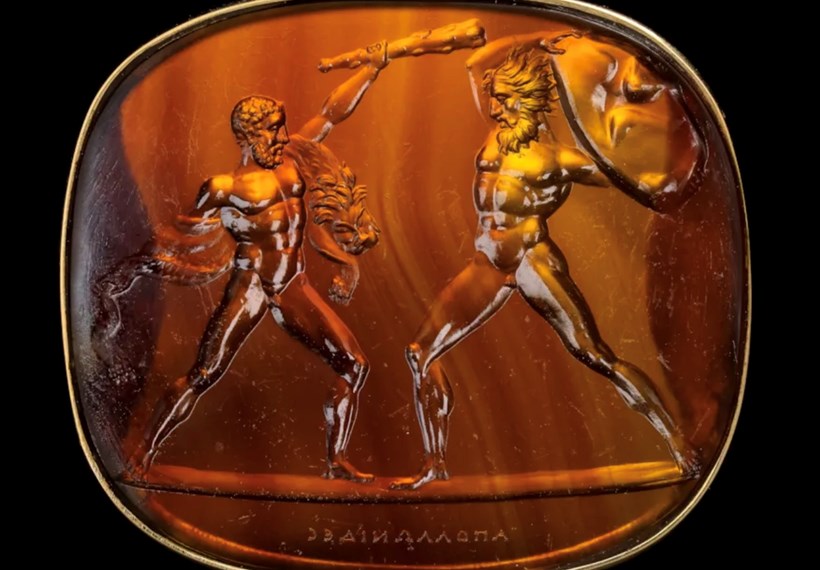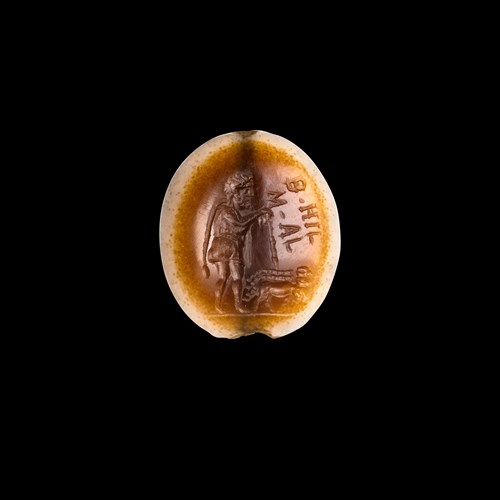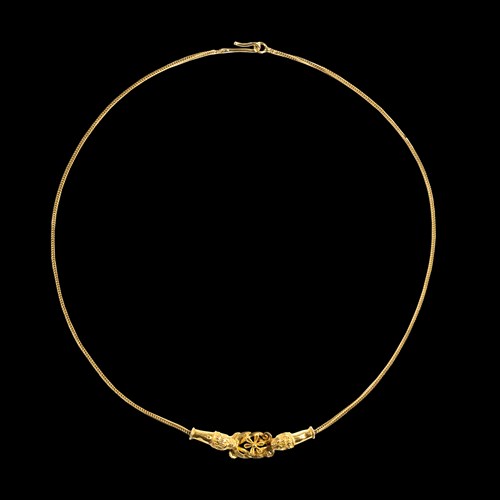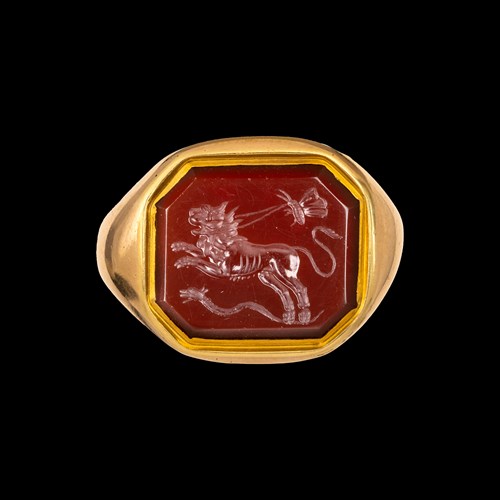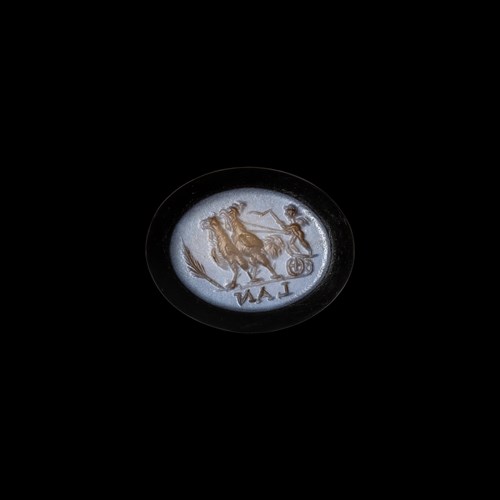Marketplace
A high carat gold ring set with an Italic banded agate intaglio. Head of Amon
A high carat gold ring set with an Italic banded agate intaglio. Head of Amon
Date 2nd-1st century BCE
Period italic
Origin London, consignment
Medium gold, banded agate
Dimension 0.8 x 1.1 cm (0¹/₄ x 0³/₈ inches)
The ring is formed by a rounded hoop, the shoulders with a large rounded gold cable.The oval box-setting is set with a banded agate intaglio showing the portrait of Jupiter Amon facing left. The syncretic god is characterized by strong features, beard and ram horns. Wear marks. Presence of globular elements, typical of the Italic production as the choice of the stone.
The Romans considered the revered North African oracle Ammon to be an incarnation of Jupiter, and referred to this dual syncretic deity as Jupiter Ammon. Zeus Ammon appears on Cyrene coinage from the end of the 6th century B.C. We can assume that it is through coinage that the image of the god travels to Greece. On Alexandrian coins, from the last third of the 4th century B.C., it is Alexander who we see appear with ram's horns. This monetary type was one of the most widespread in all of Antiquity. Manufacturing continued long after the death of the conqueror, in Macedonia until the accession of Demetrios Poliorcetes and in Asia Minor until the Battle of Magnesia.
The Romans considered the revered North African oracle Ammon to be an incarnation of Jupiter, and referred to this dual syncretic deity as Jupiter Ammon. Zeus Ammon appears on Cyrene coinage from the end of the 6th century B.C. We can assume that it is through coinage that the image of the god travels to Greece. On Alexandrian coins, from the last third of the 4th century B.C., it is Alexander who we see appear with ram's horns. This monetary type was one of the most widespread in all of Antiquity. Manufacturing continued long after the death of the conqueror, in Macedonia until the accession of Demetrios Poliorcetes and in Asia Minor until the Battle of Magnesia.
Date: 2nd-1st century BCE
Period: italic
Origin: London, consignment
Medium: gold, banded agate
Dimension: 0.8 x 1.1 cm (0¹/₄ x 0³/₈ inches)
Provenance: Old private collection
More artworks from the Gallery



